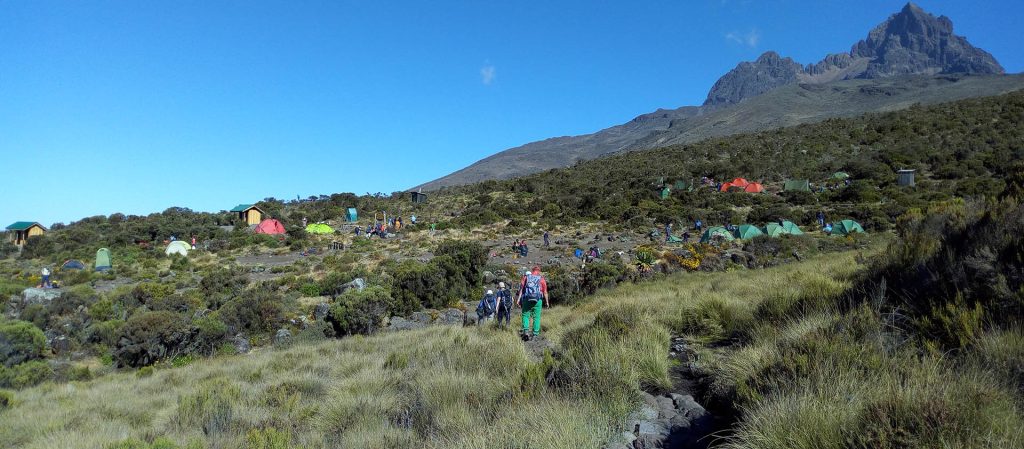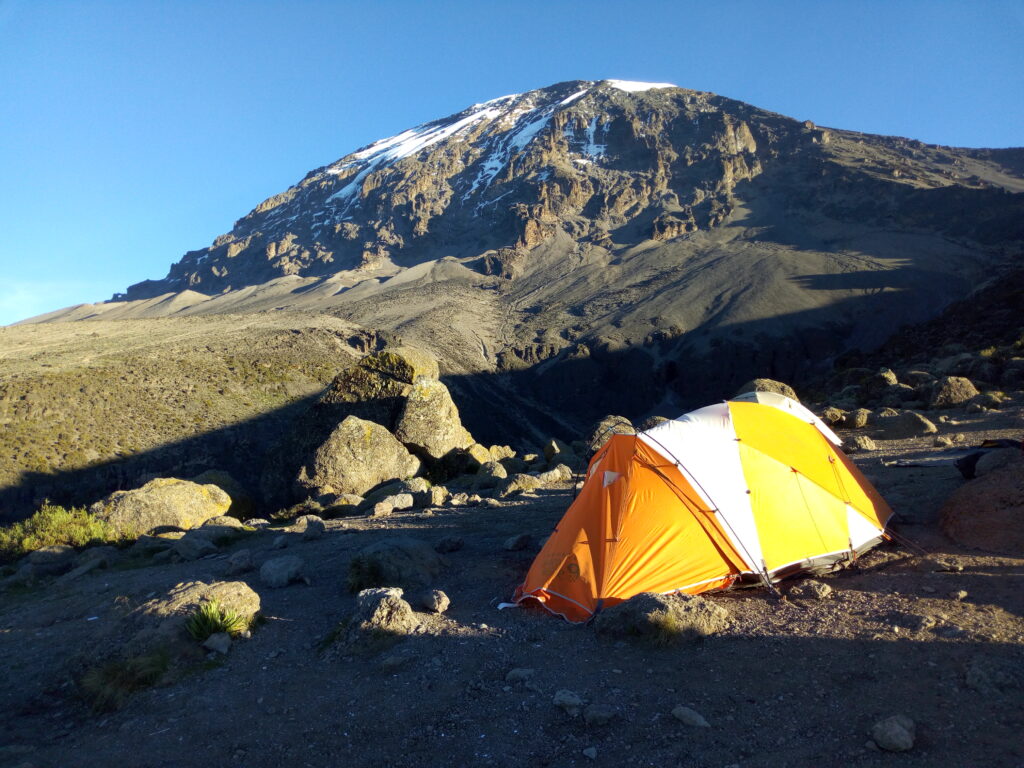Lemosho Route
Lemosho Route has the success rate of almost 95% as it has a longer itinerary for Kilimanjaro Climbing. The Lemosho Route starts from the West at the Londorossi gate at a height of 2360 metres from the sea level. The Kilimanjaro Lemosho Route is an improved version of old Shira route.
Lemosho Route is one of the most preferred routes compared to other routes and it starts through a lush forest and continues towards Shira plateau. Most of the tour operators recommend a minimum of 7 days attempt to this route but 8- or 9-days attempt would be preferred for higher acclimatization and a successful summit. You must try this route on your Climbing Mount Kilimanjaro.
Approaching from the west, Lemosho Route joins the Machame route during the Mount Kilimanjaro Climbing expedition. The route is longer route, so the trekkers are needed to be physically fit. Due to longer route, you can get plenty of time for acclimatization. It is recommended to take 8 days for a successful summit. The success rate is 80 to 85%. Due to good profile for acclimatization, the difficulty level is medium.
Facts:
- As the route is longer, hikers need to make them physically fit
- Prepare a ‘Kilimanjaro playlist’ to listen to during your hike which helps to break your mental stress and physical exhaustion.
- Take it easy and don’t try to rush to the top and always listen to your guide.
- The dry season between August and October then January and March is most suitable for hikers for a good experience.
- The amount of Oxygen on the top is only 50% as compared to the amount of Oxygen you are used to have. So, pay attention to your body signals and inform your guide as soon as possible.
- Drink lots of water and eat healthy food.
- If possible, avoid taking pills like Diamox. It may show harmful side effects.
- Pack the necessary gears and double-check the complete list.
- The Lemosho route is the most beautiful route presenting panoramic vistas.
- This rising traverse on the most appealing route on the mountain is designed with maximum acclimatization and summit success in mind.
- As a longer route, it offers more time to acclimatize, and gives the highest success rate.
The Lemosho route begins from the lush and fertile rainforest, which is the first ecological zone you will encounter on Kilimanjaro. The route then leads across the Shira Plateau, which used to be Kilimanjaro's third peak before it collapsed. You will also see the Lava Tower before descending into Barranco Valley, which is one of the most beautiful areas of the entire trail. After crossing the Barranco Wall, you will attempt to reach the summit from Barafu. This is the coldest and breeziest section of your entire adventure.
The weather conditions on Mount Kilimanjaro are unpredictable. However, the Lemosho Route generally avoids extreme winter or summer weather. Instead, it encounters dry and wet seasons. The amount of rainfall exhibits significant variation depending on the altitude, with the rainforest zone receiving up to 2100 mm per year and the summit zone receiving less than 120 mm per year. It is noteworthy that daily temperature changes may be unanticipated due to the variation in altitude.
The Lemosho Route is the recommended route for reaching the summit of Kilimanjaro. It boasts a high success rate of 95% compared to other routes. However, the number of days spent on the mountain can impact your chances of success. For all operators combined, 6-day Lemosho climbs have a success rate of around 65%, while 7-day Lemosho climbs have a success rate of about 85%, and 8-day Lemosho climbs have a success rate of approximately 90%. Our success rate for 8-day Lemosho climbs has historically ranged between 90-95%.
- The rainforest trail is a wonderful experience for the trekkers.
- The trek is a slow, gentle trek, making it a wonderful way to acclimatise and, therefore, the success rate is high on this route.
- As the route merges with Machame, so the trek is not solitary and offers a good opportunity to meet with other trekkers.
- As a longer route, it is a little expensive
- It can be busy and crowded in peak season





